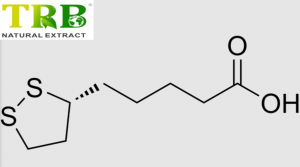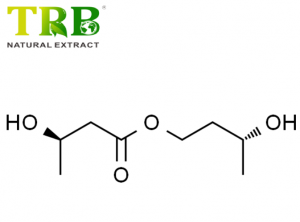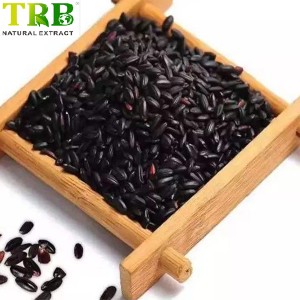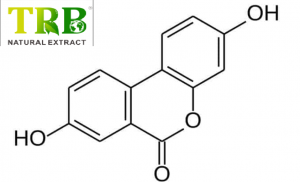Sarsasapogenin 98% (by HPLC) – High-Purity Natural Steroid for Research & Development
CAS No.: 126-19-2 | Molecular Formula: C27H44O3 | Molecular Weight: 416.64
Product Overview
Sarsasapogenin (Parigenin) is a bioactive steroidal sapogenin isolated from Anemarrhena asphodeloides Bunge, a traditional Chinese medicinal herb. With a purity of ≥98% verified by HPLC (High-Performance Liquid Chromatography), this compound is supplied as a white to beige crystalline powder, available in flexible pack sizes (0.5g, 1g, 2.5g, 5g) to meet diverse research needs. Storage conditions: +2°C to +8°C to ensure long-term stability .
Key Specifications
| Parameter | Details |
|---|---|
| Purity | ≥98% (HPLC) |
| Appearance | White to beige powder |
| Solubility | Soluble in ethanol (5 mg/mL), insoluble in DMSO/water |
| CAS Number | 126-19-2 |
| Molecular Formula | C27H44O3 |
| Storage | +2°C to +8°C, protected from light |
Pharmacological Effects & Therapeutic Potential
1. Anti-Inflammatory & Immunomodulatory Activity
Sarsasapogenin potently inhibits NF-κB and MAPK signaling pathways, suppressing pro-inflammatory cytokines (IL-1β, TNF-α, IL-6) in LPS-stimulated macrophages . It demonstrates efficacy in colitis models by reducing neutrophil infiltration and enhancing anti-inflammatory IL-10 levels, suggesting applications in inflammatory bowel disease (IBD) therapy .
2. Anticancer & Pro-Apoptotic Effects
- Colorectal Cancer: Dose-dependently inhibits HT-29 cell proliferation via downregulation of KRAS and EGFR expression, inducing caspase-dependent mitochondrial apoptosis .
- Hepatocellular Carcinoma: Triggers apoptosis in HepG2 cells by activating ER stress pathways and the unfolded protein response (UPR) .
- Synergistic Potential: Enhances chemotherapeutic sensitivity through NF-κB pathway modulation .
3. Neuroprotection & Cognitive Enhancement
- Alzheimer’s Disease: Reduces Aβ plaque formation and tau hyperphosphorylation via PPARγ antagonism, improving learning/memory in rodent models .
- Depression: Restores cholinergic function by upregulating α4/α7-nAChRs in the hippocampus and cortex, reversing depression-like behaviors in olfactory bulbectomized rats .
4. Anti-Osteoporotic Action
Suppresses RANKL-induced osteoclastogenesis by blocking NFATc1 transcription, preventing bone resorption in murine models. This positions it as a candidate for osteoporosis and rheumatoid arthritis treatment .
5. Antidiabetic & Metabolic Benefits
Emerging studies indicate sarsasapogenin improves insulin sensitivity and reduces hyperglycemia in diabetic models, potentially via PPARγ-mediated pathways .
Applications in Research & Industry
- Pharmaceutical Development: Core scaffold for synthesizing derivatives with enhanced bioactivity (e.g., Timosaponin A1) .
- Nutraceuticals: Neuroprotective and anti-aging formulations targeting cognitive decline.
- Cosmeceuticals: Anti-inflammatory and antioxidant properties for skincare products.
- Veterinary Medicine: Potential use in bone health and metabolic disorder management.
Quality Assurance & Compliance
- Certification: Batch-specific HPLC chromatograms and MS data provided (Example: Sigma-Aldrich Lot S8534) .
- Safety: Acute toxicity studies show low adverse effects in rodents (LD50 >2g/kg), though chronic toxicity data remain limited .
- Regulatory: Compliant with USP/EP standards for biochemical reagents.
Keywords
- High-purity sarsasapogenin HPLC 98%
- Natural steroid sapogenin for inflammation
- Sarsasapogenin anticancer mechanism
- Neuroprotective agent CAS 126-19-2
- Osteoporosis treatment NFATc1 inhibitor
Frequently Asked Questions (FAQs)
Q: Is sarsasapogenin safe for human trials?
A: Current data support preclinical safety, but clinical studies are ongoing to validate efficacy and dosage .
Q: Can it be used in combination therapies?
A: Yes, synergistic effects with chemotherapeutics (e.g., 5-FU) and anti-inflammatory drugs are under investigation .
Ordering Information
Contact us for bulk pricing and custom synthesis. Global shipping available with cold-chain logistics for temperature-sensitive batches.







